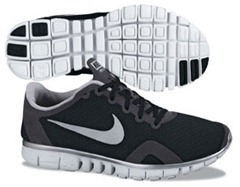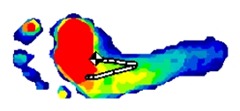I often find myself telling clients that I work with in the clinic that changing running form is hard. The difficulty is not so much physical – tissues will adapt to a new movement pattern over time. Rather, the challenge is mainly neurological – it’s very hard to make the body move in a new and different way. We each fall into a preferred movement pattern dictated by our anatomy, shoes, surfaces, typical non-running activities, etc., and it requires concerted effort to change. But it can be done with practice – the brain has sufficient neuroplasticity to rewire itself in a way that supports novel behaviors like a new running form. It’s difficult, and it feels strange to experiment with new forms of movement at first, but it can be done.
A few days ago a friend on Facebook posted a video that examines neuroplasticity as it relates to riding an unusual bike. As I watched it I kept thinking about the parallels to changing one’s running form. I also kept thinking about how amazing the human brain is – watch the video below, it’s well worth it!


















Woah, that video is incredible! Really great post – I imagine it would be interesting to see how many different ways this can apply to learnt physical behaviors.
I had seen this reverse steering thing, and it is interesting, but the fact that it is completely counter-intuitive clouds the issue (turn left to go right?!). And it is about using a machine. I don’t think it relates to running at all, because running is not truly learned, but rather appears at a certain stage in development — most mammals can walk within minutes of birth; humans take longer but still don’t need to be taught. Postural patterns that make running awkward are learned, however, and are difficult to unlearn, but, still, underneath the bad form is (barring developmental problems) the original natural pattern, unless there was some developmental problem.
What messes up running, in my experience, are patterns of isometric contraction that are constantly maintained in large muscles (think trapezius) which prevent the spinal chains (erector spinae) from engaging to organize movement. So, instead of having nice fluid adaptation of the spine in movement, we have large muscles of the limbs trying to do everything. Inefficient, but eminently possible — man is a remarkably adaptable beast. I don’t deny that it is difficult to learn to sense and alter patterns that disturb running, but this is not at all like learning to run differently. It is more about learning to not interfere with the innate running patterns that most of us displayed when we were young children, before the contractive patterns that are often acquired during our school years manifest. I’ve been teaching runners (and dancers, musicians, etc.) the Alexander Technique for over 26 years. It is a good place to start.
The most disturbing thing about this bike is the very low seat height, which is going to both kills your knees and make steering difficult (and even more dangerous). I think the reverse concept could be mastered in that it has some similarities to steering a canoe or kayak.
I would like to see the experiment with a properly fitted bike to see how that changes the experience.
Really good point about the kayak, Caitlin! Of course, you have to have had the kayak canoe experience.
Agree about the seat height, too. In this case, maybe the low seat height was a little safer. The poor little kid fell and fell again.
This is a pretty good video but the problem with all the excitement about neuroplasticity is that it’s mistakenly thought to be somehow all in your head. Your body is part of the system, and what the guy who made this great video has overlooked are the physical differences between the a regular bike and a backwards bike. On a regular bike the steering mechanism uses both turning of the front wheel and shifting your weight — that’s what happens when you physically move the handlebars, it causes you to lengthen the side of your body you’re turning the wheel away from and lean towards the direction you wish to turn. The backwards bike only reverses one of these — you turn the handlebars the opposite way you want to go but still have to lean the way you do want to go — but the physical act of turning the handlebars the opposite way you want to turn makes it extremely difficult to shift your weight. Sports equipment rarely requires us to do the opposite of how our structure works because we don’t enjoy the act of using it — aside from the satisfaction of conquering a challenge, they’re not enjoyable. There’s a reason bikes were not originally invented to work this way (and it’s not just that it requires an extra bit of work to build) and that it’s difficult to learn to ride them. You have to “switch” something really fundamental about how you use your weight. Becoming able to see that part of the equation helps you understand what changes really are taking place in the brain, at least on a mechanical level, and then you can work much more powerfully with the brain’s neuroplastic potential to help people learn to run better or whatever else they want to do. This is what I learned when I trained to become a Feldenkrais practitioner.
I´d like to thank you for sharing this video. I accidentally found it and I just had the same thoughts about changing running patterns and how could the changes worsen injuries in runners, if they don´t do it gradually.